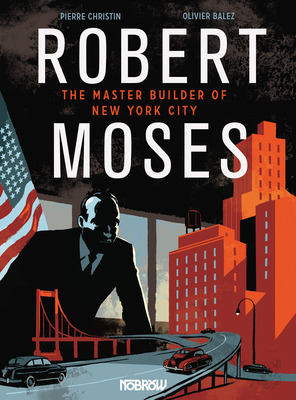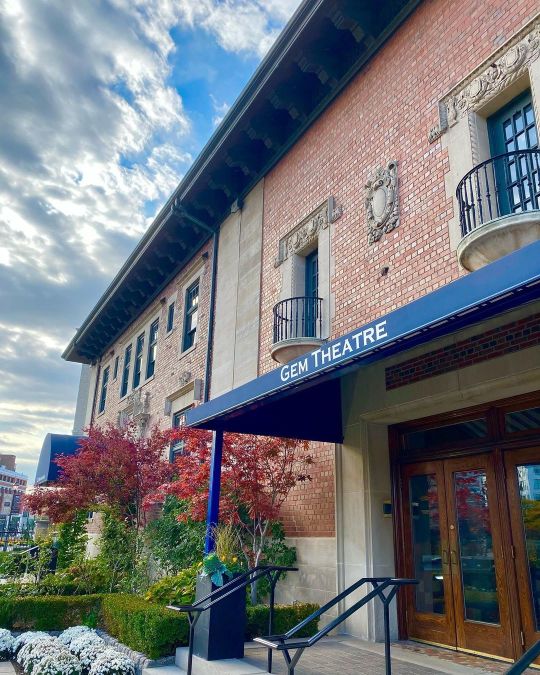#urbanrenewal
Text
youtube
#UrbanExploration#SustainableLiving#CityDesign#FutureCities#GreenArchitecture#UrbanRenewal#ModernUrbanism#CommunityDevelopment#SmartCities#EnvironmentalDesign#UrbanPlanning#GreenInfrastructure#CityLife#InnovativeDesign#UrbanSustainability#youtube#small youtuber#online business#branding#ecommerce#entrepreneur#marketing#Youtube
0 notes
Text

Religious heritage stands at a crossroads in contemporary society, struggling with shifting social dynamics and evolving urban landscapes. The masterclass on Religious Heritage (7th-8th March 2024) explored these challenges and opportunities in transforming religious buildings during secular shifts within our societies. Experts discussed the dominant role of religious heritage in urban contexts and its modern relevance in towering above the main cityfabric.
Central themes included changes in religious buildings' societal role as our identities become more liquid with an importance of vulnerability. Churches are urged to create spaces for human connection beyond rituals, aligning with core faith principles and take up their function of care for humanity once more. Discussion becomes central instead of authority.
The role of religious buildings in shaping urban social environments nowadays should put the focus on community engagement and inclusive spaces over dominating a neighbourhood and working with exclusion. Projects like the multireligious house in Bern showcase religious heritage's continued relevance. The speakers emphasized adaptive strategies to ensure religious heritage's vitality and relevance in diverse urban landscapes. By embracing secularization and fostering inclusivity, religious institutions can contribute to community well-being and social cohesion, preserving invaluable cultural assets for the future whilst fulfilling their spatial anchorrole.
~ The masterclass was organized by the Future of Religious Heritage initiative and the University of Bologna with sponsorship from the European Union.
Secular Revival Beyond Belief: Redefining Religious Architecture for the communities of the 21th century PART III
#ReligiousHeritage#UrbanTransformation#CommunityEngagement#AdaptiveReuse#InclusiveSpaces#SocialCohesion#FutureofFaith#CulturalPreservation#ModernReligion#HeritageRevitalization#SocialImpact#CommunityWellbeing#UrbanRenewal#FaithinAction#HeritageAdaptation#buildings
0 notes
Text
When urban renewal came to Penn Yan
By Jonathan Monfiletto

Sixty years ago, the village of Penn Yan embarked on a vision to rejuvenate the community and invest in the downtown area by knocking down dilapidated buildings, repairing salvageable structures, renovating and relocating some local businesses and agencies, installing off-street parking, and alleviating traffic congestion. The village board adopted a development plan outlining these goals in 1961; in April 1964, the board established – through the action of the New York State Legislature – the Penn Yan Urban Renewal Agency to seek state and local funding for projects and oversee their completion.
At that time, the Walkerbilt wood manufacturing company was located on Lake Street along the Keuka Lake Outlet; across the street were family homes impacted by the factory’s pollution and disruption. The Penn Yan fire station was located in a cramped space on Main Street wedged among downtown businesses. Elm Street between Main and Liberty streets hosted a plethora of local businesses. Several buildings in the downtown area were deemed in need of improvement – or in need of demolition – and the streets were congested with automobiles parked along the curbs.
Such was the scene when urban renewal came to Penn Yan, starting from the early 1960s and lasting until the early 1970s. Urban renewal undoubtedly has a negative connotation in American history – and rightfully so – for the displacement of minority communities and businesses in the name of economic development and revitalization that unfolded in large cities across the nation. However, for Penn Yan, urban renewal took the form of what might be called today – in New York State – a downtown revitalization program.
Early on, village officials learned the federal government would contribute – for a municipality of 50,000 people or fewer – three-fourths of the cost of an urban renewal project. Of the remaining quarter, the state would pay half – or one-eighth of the total cost – while the village would pay the final eighth. And, by establishing an urban renewal agency, Penn Yan could borrow up to 2 percent of the value of all assessable property rather than – without such an organization – 2 percent of the value of all taxable property, giving the village more spending power.
So, with the bulk of planning and preparation taking shape throughout 1965, Penn Yan started what it called the Jacobs Brook Urban Renewal Project. This project focused on rejuvenating the area of the village bounded by Maiden Lane to the north, Liberty Street to the west, the namesake stream to the east, and Elm and East Elm streets to the south, with the downtown area of Main Street smack dab in the middle. By the end of the year, the board also took steps toward what was called the Keuka Lake Outlet Development Project – an effort that largely involved relocating Walkerbilt to a larger, more modern facility on North Avenue and refurbishing the project with the park that stands there today.
Following a survey of the business area in 1964, it was reported in October 1965 that urban renewal would displace 12 businesses and five families – a total of 14 people living in second-floor apartments in the village downtown – and the first property appraisals were completed. Among the structures to be acquired and demolished were the firehouse, a supermarket, a warehouse, a used car display area, and several vacant buildings. On the east side and rear of Main Street, the village acquired 97,297 square feet of space; on the west side and rear of Main Street, the village acquired 70,805 square feet. Of this acquired space, 35,935 square feet was to be redeveloped for new buildings while 132,162 square feet was set aside for off-street parking. With the establishment of municipal parking lots behind both the west and east sides of Main Street, downtown parking spaces increased from 40 to 175.
In April 1966, the Great Atlantic & Pacific Tea Co. grocery store – then located on Main Street approximately where Community Bank is now – requested 10,500 square feet of building space for a new supermarket after it was displaced. On the flip side of the same coin, the Thompson Furniture Co. – then located approximately where the Town of Milo offices are now – sought to return to the same spot after its building was razed. That July, the village acquired property on the north side of Elm Street for the new firehouse, though it wasn’t without controversy when it came to an adjacent parcel owned by Jolley Chevrolet. Jolley declined the village’s offer to buy the parcel, so the village began condemnation proceedings against the parcel; the matter went to court, and the village won over Jolley. Later, a similar battle arose when Henderson’s Drug Store refused to allow the village to lop off 20 feet from the rear of its building to make space for a municipal parking lot; that time, the local business won the day.
In March 1967, U.S. Rep. Samuel Stratton announced the village would receive a $758,030 grant toward land acquisition, relocation of site occupants, site clearance, and preparation related to the Jacobs Brook Urban Renewal Project. If 1965 was the planning and preparing step and 1966 involved the surveys and concepts, then 1967 marked when the real work began especially with the boost of this funding. The following year, the village received $437,808 for the Keuka Outlet Development Project to demolish six properties on Lake Street along the outlet, refurbish the area into a park, and relocate the Walkerbilt plant. By December 1967, the Penn Yan Urban Renewal Agency announced the real, physical work of the project “will be in full execution within a few days” after being bogged down by legal technicalities.
The remaining years of the 1960s saw the phases of property acquisition, building demolition and rehabilitation, and the construction of new buildings and development of existing properties as downtown Penn Yan took on a new look. While the demolition of structures to the rear of the buildings on the west side of Main Street paved the way for the parking lot there, a 14-foot wide, 9-foot high, and 100-foot long steel pipe was installed in Jacobs Brook to allow the area to be filled in and covered over to create the parking lot there. Two buildings in that area were also razed to make space.
In 1970, yet another urban renewal controversy arose when 26 buildings and their respective business owners were told they must meet rehabilitation standards or face the loss of their properties. At this point, the village noted the difficulty of enforcing new code requirements in light of urban renewal. At the same time, people wondered whether urban renewal had gone too far if the village could condemn and demolish any building it wanted to.
It was this discontented realization as well as the fact that projects had been completed – including with new buildings and new businesses on Main Street – that brought the urban renewal area in Penn Yan to end by February 1973. At that point, the village board “closed out its business with the Penn Yan Urban Renewal Agency,” according to an item in The Chronicle-Express.
Was urban renewal a good thing or a bad thing for Penn Yan? The jury was still out when urban renewal end, and it might still be out today.

#historyblog#history#museum#archives#american history#us history#local history#newyork#yatescounty#pennyan#urbanrenewal#business#industry#government#newspaper
0 notes
Text

Detroit Residents Unheard as Powerful Interests Eclipse Local Perspectives
0 notes
Text






Discover how quality concrete in Bletchley is reshaping the landscape. Our transformative solutions are revitalizing the heart of Bletchley, bringing durability, aesthetics, and sustainability to every project. From striking architectural marvels to sturdy infrastructure, we're paving the way for a brighter future, one solid foundation at a time. Join us on this journey as we blend innovation with tradition, delivering the best in concrete craftsmanship to elevate Bletchley's urban charm.
#ConcreteTransformation#BletchleyRevival#QualityConstruction#DurableInfrastructure#ConcreteSolutions#UrbanRenewal#BuildingStrongFoundations#CityImprovement#ArchitecturalExcellence#SustainableConstruction
1 note
·
View note
Text
#Dwarka#UrbanDevelopment#Demolition#LandmarkShift#CityTransformation#Progress#Infrastructure#UrbanPlanning#ChangeIsGood#CityRevamp#FutureCities#CommunityEngagement#SustainableDevelopment#Modernization#Cityscape#SmartCities#HistoricalHeritage#PublicEngagement#UrbanRenewal#CityGrowth
0 notes
Photo

Urban Regeneration and Adaptive Reuse are essential for uplifting cities, communities, and neighbourhoods and utilizing the potential of existing buildings and built environments. Last week, I gave a talk on "Urban Regeneration and Adaptive Reuse: Understanding through Case Studies". I presented case studies of urban regeneration in Ahmedabad, India, and Marina Bay, Singapore. Moreover, the adaptive reuse of the LX Factory in Lisbon, Portugal, was discussed in detail. I also added the names of a few more case studies that students can look up and learn from it. Such as Shanghai, China; Shenzhen, China; Buenos Aires, Argentina; Santiago, Chile; and Seoul, South Korea. Freetown Christiania, Copenhagen, Denmark; University of Luxembourg, Belval Campus, Luxembourg; Connectra, Belgium; Maasmechelen Village, Belgium; Book Store Dominicanen Maastricht, Netherlands; and Park Spoor Nord, Belgium. Thanks to Prof. Dr. Saima Gulzar and the faculty of the School of Architecture and Planning (SAP), UMT Lahore, for the invitation. In the picture, receiving a token of appreciation from Sana Malik, PhD, Chairperson, Department of Architecture, UMT Lahore. #Urban #urbanregeneration #urbanrenewal #adaptivereuse #reuse #sustainabledevelopment #BUITEMS #BUITEMSQuetta #DoABUITEMS #UMT #UMTLahore #architecture #urbandesign #urbanplanning #urbanism #Lahore #Punjab #Pakistan #university (at UMT SAP - School of Architecture and Planning) https://www.instagram.com/p/CpfAFZxN5eP/?igshid=NGJjMDIxMWI=
#urban#urbanregeneration#urbanrenewal#adaptivereuse#reuse#sustainabledevelopment#buitems#buitemsquetta#doabuitems#umt#umtlahore#architecture#urbandesign#urbanplanning#urbanism#lahore#punjab#pakistan#university
0 notes
Photo

Follow @urbandesign.lab The Factory Hub, Edinburgh, United Kingdom The project will provide the community with the ability to learn about new and emerging technologies and businesses. It will foster environment that will help community members in developing businesses or technologies that will not only better the local community but may also the world. Focusing mainly on the idea of social and community enterprise, the business and technologies are geared to- wards life and social enhancement, rather than pure monetary gain. Project by: Douaa Arkoub DM for credits/Removal. . . . . Photoshop Masterclass (2 Days Integrated Workshop) Session Details: • Day 1: 18th of February, 2023 | Urban Mapping • Day 2: 19th of February, 2023 | 3D Urban Visualization 🔗Registration link in the bio Limited Seats available! . . . #urbanrenewal #designforpublicspace #landscapedesigns #parkarchitecture #citylifebestlife #citiesbestcities #designcities #urbanparkdesigns #parkdesignideas #urbanplanningdesign #citygreening #architecturedesigns #urbanparksideas #cityparkarchitecture #placemakingdesigns #parkplanner #designforparks #urbanparksplanner #urbanplanningforparks #citiesforparks #cityparkplans #parkplanningdesign #urbanparkdesigners #urbanparksplanning #cityparksplanning #parksdesigner #cityparkplanners #urbanparksdesigner (at Edinburgh, Scotland, United Kingdom) https://www.instagram.com/p/ConEjwCPNIX/?igshid=NGJjMDIxMWI=
#urbanrenewal#designforpublicspace#landscapedesigns#parkarchitecture#citylifebestlife#citiesbestcities#designcities#urbanparkdesigns#parkdesignideas#urbanplanningdesign#citygreening#architecturedesigns#urbanparksideas#cityparkarchitecture#placemakingdesigns#parkplanner#designforparks#urbanparksplanner#urbanplanningforparks#citiesforparks#cityparkplans#parkplanningdesign#urbanparkdesigners#urbanparksplanning#cityparksplanning#parksdesigner#cityparkplanners#urbanparksdesigner
0 notes
Text
Robert Moses The Master Builder of New York City-Booksvenue.com

BUY NOW
The achievements of one man changed the face of an entire city. Robert Moses: the mastermind of New York. From the subway to the skyscraper, from Manhattan's Financial District to the Long Island suburbs, every inch of New York tells the story of this controversial urban planner's mind. In paperback for the first time, Pierre Christin and Olivier Balez's comic book takes on the infamous Power Broker and unlocks the historical battles that created the modern metropolis.
Publisher Name
Nobrow Press
Author Name
Hagendorf, Col
Format
Audio
Bisac Subject Major
CGN
Language
NG
Isbn 10
191062036X
Isbn 13
9781910620366
Target Age Group
min:14, max:UP
Dimensions
00.98" H x 00.07" L x 30.00" W
Page Count
108
To know more about please visit our website www.booksvenue.com
#RobertMoses#MasterBuilder#NewYorkCity#UrbanPlanning#CityDevelopment#Infrastructure#UrbanRenewal#20thCenturyArchitecture#CityHistory#NewYorkLegacy#RobertMosesLegacy#MosesEffect#books#buybooks#booksonline#cheapbooks#bookslibrary#onlinebuy#largestbookstore#booksvenue#onlinebooksbuy#booksmarket#onlinebooks#bookstores#onlinebookstores#bookstore#bookstobuy#book#read#onlinestore
0 notes
Photo

Built in 1902 as the Twentieth Century Club, the Gem Theatre has gone through many changes over the years. Protected from demolition when Comerica Park was built, the Gem/Century Theatre moved five blocks on wheels to this location at 333 Madison in 1997. 🎭
#gemtheatre#gemtheatredetroit#downtowndetroit#urbanrenewal#detroithistory#historypreservation#detroitarchitecture#walkingdetroit
0 notes
Photo

𝗨𝗿𝗯𝗮𝗻 𝗥𝗲𝗻𝗲𝘄𝗮𝗹 𝗼𝗳 𝗦𝗵𝗲𝗻𝘇𝗵𝗲𝗻 𝗕𝗮𝗴𝘂𝗮𝗹𝗶𝗻𝗴 𝗜𝗻𝗱𝘂𝘀𝘁𝗿𝗶𝗮𝗹 𝗣𝗮𝗿𝗸 - work by @aedas_architects "𝗔 𝘃𝗶𝗯𝗿𝗮𝗻𝘁 𝗵𝘂𝗯 𝗶𝗻 𝗮 𝗵𝗶𝗴𝗵-𝗱𝗲𝗻𝘀𝗶𝘁𝘆 𝗰𝗶𝘁𝘆. Led by Aedas Executive Director Kelvin Hu, and Chairman and Global Design Principal Keith Griffiths, Aedas’ design scheme came first in the competition for the urban renewal of Bagualing Industrial Park, a core project for the transformation of Bagualing area in Shenzhen. Located in the financial industry belt adjacent to Hongling North Road, the project includes a high-rise office and apartment tower, along with a retail podium. The site is surrounded by comprehensive transportation network, making it the nexus of cross-district connection. The project is embraced by key high-rise developments and a plenitude of poetic ravines and mountains. Inspired by Chinese thoughts, the design integrates the natural elements. Mountains and rivers are closely interconnected, to spiral and rise with each other. The design divides the tower crown into four jagged quadrants. The shape is drawn from the conceit of the Pinwheel of Bagua (windmill), auguring growth and prosperity; together with the streamlined tower body, they form a dynamic architectural outline that embodies the Feng Shui culture and oriental aesthetics on a plot with abundant natural resources." . ⭕ What do you think about this design and visualization? 🔻Tag your Architect Friends! . ❌Turn ON Post Notifications to see new Contents.❗ _ _ _ _ _ _ _ _ _ _ _ _ _ _ _ _ _ _ _ _ _ _ _ _ Follow @archdlofficial for more! 🖤 Tag #archdl and #archdlofficial or DM your works for Featuring! . . . . . . . . . . . . . . #architect #architecture #architecturelovers #arch_shovel #archidaily #archilovers #futurearchitect #architecturalreview #archiseeker #architectanddesign #arch_union #architecturevision #design #rendering #concept #urbandesign #urbanrenewal #transformation #complex #retail #office #apartment #nature #mountain #river #Bagua #FengShui #Shenzhen (at Shenzhen, Guangdong) https://www.instagram.com/p/CfWLdZ6sqIa/?igshid=NGJjMDIxMWI=
#archdl#archdlofficial#architect#architecture#architecturelovers#arch_shovel#archidaily#archilovers#futurearchitect#architecturalreview#archiseeker#architectanddesign#arch_union#architecturevision#design#rendering#concept#urbandesign#urbanrenewal#transformation#complex#retail#office#apartment#nature#mountain#river#bagua#fengshui#shenzhen
1 note
·
View note
Video
youtube
Urban Symphony: Where Dreams Take Flight
#youtube#UrbanArchitecture ModernDesign CityscapePhotography SustainableCities UrbanRenewal GreenBuilding FutureCities InnovativeDesigns Architectura
0 notes
Link
The Melbourne Docklands area is experiencing a significant revitalization, with key developments and investments driving its transformation. TFE Hotels' announcement to operate the Vibe Hotel in the heart of Docklands marks a significant milestone in the area's renaissance. TFE Hotels' Expansion TFE Hotels, known for its commitment to quality hospitality, is set to operate the soon-to-be-rebranded Vibe Hotel Melbourne Docklands and Storehouse Docklands restaurant. With 273 rooms and a prime location, the hotel will offer world-class accommodation and dining experiences to visitors and locals alike. Docklands Renaissance The decision to operate the Vibe Hotel comes amidst a wave of revitalization initiatives in Docklands. Marvel Stadium's planned $250M upgrade, coupled with mixed-use developments and infrastructure improvements, underscores the area's resurgence as a vibrant precinct for tourism, entertainment, and community engagement. Strategic Partnerships TFE Hotels' collaboration with MA Financial Group aligns with the shared vision of enhancing Docklands' appeal and bolstering its hospitality offerings. The partnership aims to leverage the area's potential and capitalize on the growing demand for upscale accommodation options. Investment Opportunities MA Financial Group's investment in the Vibe Hotel reflects the confidence in Australia's post-COVID hospitality market. The launch of the MA Accommodation Hotel Fund further demonstrates the commitment to seizing opportunities in the sector and delivering value to investors. Unique Selling Proposition The Vibe Hotel Melbourne Docklands stands out for its strategic location, modern amenities, and stunning views of the Yarra River and Melbourne skyline. Its proximity to major attractions, including Marvel Stadium and harbourside dining options, positions it as an ideal choice for travelers seeking convenience and luxury. FAQs: Q: What is TFE Hotels' role in the revitalization of Melbourne Docklands? A: TFE Hotels is set to operate the Vibe Hotel Melbourne Docklands, contributing to the area's revitalization efforts by providing upscale accommodation and dining experiences. Q: What are some key developments driving the transformation of Melbourne Docklands? A: Key developments include Marvel Stadium's planned upgrade, mixed-use developments by various stakeholders, and infrastructure improvements aimed at enhancing the precinct's appeal. Q: How does the partnership between TFE Hotels and MA Financial Group benefit investors? A: The partnership presents investment opportunities in the thriving hospitality market, with the launch of the MA Accommodation Hotel Fund offering access to high-quality assets and potential growth prospects.
#hospitality#investment#MAFinancialGroup#MarvelStadium#MelbourneDocklands#mixedusedevelopment#revitalization#TFEHotels#tourism#urbanrenewal.#VibeHotel
0 notes
Text
If we are going to be part of the solution, we have to engage the problems. -Majora Carter, urban revitalization strategist and broadcast producer
Urban revitalization requires community engagement to tackle social problems. Majora Carter's quote highlights this - "If we are going to be part of the solution, we have to engage the problems."
As an urban renewal strategist, Carter understands grassroots activism is key. Environmental justice and green initiatives can't succeed without locals' buy-in. Community empowerment means involving residents in ideating local solutions.
Sustainability efforts must adopt a problem-solving approach. Simply proposing top-down ideas won't work. Successful urban planning needs a ground-up outlook. Listening to the inner-city's voices is crucial for development.
Social entrepreneurship can drive change by enabling problem-owners to become problem-solvers. Environmental issues and economic challenges facing disadvantaged areas are complex. Community-led social ventures have unique insights.
Carter's words remind us that positive impact requires rolling up our sleeves. Armchair activism accomplishes little. To be "part of the solution," we must directly engage the problems through grassroots participation. Embracing this mindset can catalyze urban renewal.
Empowering Tip: Actively participate in addressing issues of your local community.
#community #urbanrenewal #sustainablesolutions #environmentaljustice #Nimixo #motivationalquotes #MotivationBlowByBlow #motivationthursday
https://nimixo.com/index.php/2024/03/21/community-driven-change/
2 notes
·
View notes
Text
Exciting Launch of Hayes Regeneration Project Marks a New Era for town

Hillingdon Council and Higgins Partnerships break ground on flagship Hayes regeneration, promising 740 new homes and vibrant community spaces. Read more on Hillingdon Today. #Hayes #HayesTown #HayesTownCentre #HayesRegeneration #HayesRevitalisation #AffordableHousing #CommunityDevelopment #HillingdonCouncil #RegenerationProject #UrbanRenewal #PublicConsultation #LocalGovernment #SustainableDevelopment #ConstructionPhase #CommunityEngagement #NewHomes #NeighborhoodImprovements #CouncilInitiative
Read the full article
#AffordablehousinginHayes#Communityengagementinregeneration#Communityrevitalizationprojects#Hayesregeneration#HillingdonCouncildevelopment#Localgovernmentinitiatives#Mixed-usedevelopmentprojects#Neighborhoodimprovementschemes#Newhomesconstruction#Phasedconstructionstrategy#Publicconsultationinurbanplanning#ResidentialconstructioninHillingdon#SocialhousinginitiativesinHayes#Sustainableneighborhooddevelopment#Urbanrenewalinitiatives
0 notes
Text
Exciting read on San Francisco's residential development resurgence! 🌆 Discover how the boom is luring residents back, reshaping the city's landscape. #SFRealEstate #UrbanRenewal
0 notes